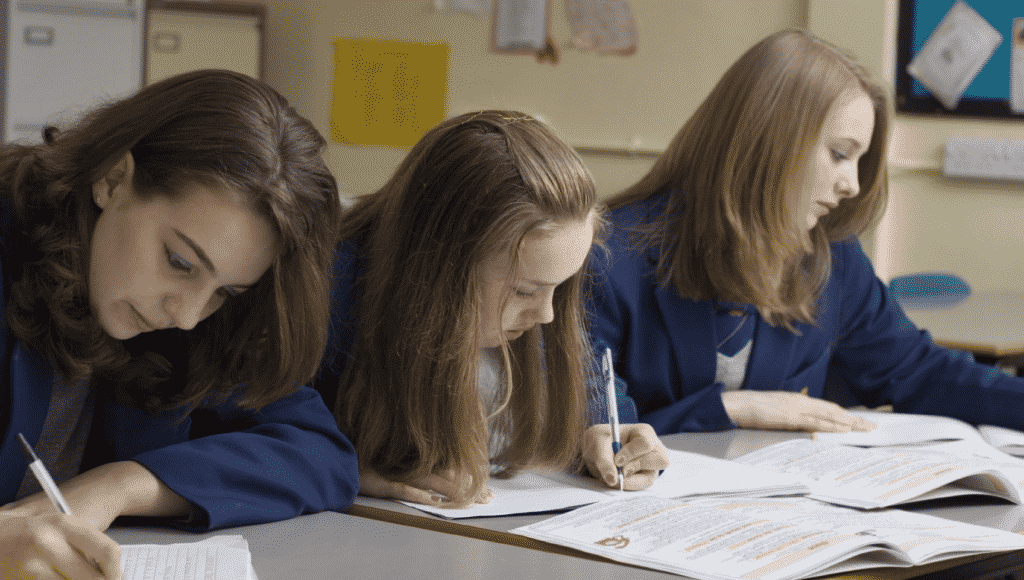Good Girls and Bad Boys

The interaction between teachers and students is complex and one factor which has been shown to play into the mix is gender – gender of students and the gender of the teacher. This blog will explore the nature of how gendered teacher-student interactions affect outcomes.
Over the years research has pointed to the fact that boys receive more negative feedback from teachers than girls, usually in the form of behavioural reprimands such as ‘stop doing that’, ‘no’ etc. Though much of this research was done in the 70s and 80s, a 2006 meta-analysis (a summary of lots of pieces of research) suggests that this pattern still existed, but surely by 2020 this isn’t the case? To be honest there isn’t much recent research out there that I can find, but given how stable these patterns seem to have been over the last 50 years I don’t think it will have shifted so much in the past few years sadly. I am going to draw on research from Consuegra et al. (2016 & 2018) to understand how teachers’ gender stereotypes affect feedback and the impact that might have on outcomes.
There are two theories that seem to explain the gender differences in negative feedback. Firstly teacher gender bias – teachers simply expect different things from boys and girls and therefore treat them differently resulting in a self-fulfilling cycle. Secondly boys show more disruptive behaviour than girls and so bring on the criticism themselves. It does appear that girls get away with more misbehaviour than boys (teacher expectations) and also more misbehaviour (e.g. calling out) is seen in boys. Boys tend to feel that teachers are more lenient towards girls.
In terms of positive feedback the research is more inconsistent, findings suggest that positive feedback is generally given in equal amounts to both genders or more to boys than girls – directing questions, asking them to participate in experiments – perhaps as a way to retain involvement. What has been suggested however is that the proportion of positive to negative comments is more important than the overall number of either anything from 1:3 to 1:10 – though these ratios are rarely achieved. Regardless of gender it has been found that increasing the positive feedback increases on-task behaviour when in a 1:3 ratio.
Are teachers aware of gender when they are teaching? If you ask teachers they will say that really they don’t treat girls and boys differently. However if you ask the pupils a different picture emerges – boys and girls consistently feel they are treated differently by teachers, and this is confirmed over and over in the research (and not just by asking students)! How can teachers be so ‘gender-blind’ to their own classroom behaviour? Given the complexity of the classroom environment, teachers can be forgiven for not noticing their own biases and it takes effort to step back and notice what you are doing in your classroom.
So how might these unintentional gender differences affect outcomes? Unfortunately gendered-interactions on their own fail to predict outcome but it is the interaction between a variety of variables such as ethnicity and socioeconomic status, as well as gender, that provide better explanatory mechanisms for the gender differences in outcome. However, teachers need to be mindful of the fact that negative teacher feedback (as we’ve established more likely given to boys) will result in lower interest, motivation, learning and poorer behaviour and this will not help educational outcomes.
What, then, are the practical takeaways? The research suggests taking a step back and becoming more aware of the feedback you give to boys and girls in the classroom. Perhaps take a video and reflect on whether you treat them differently and how you might change to make it more equitable. But it comes with a word of warning, don’t make too many changes, too fast: if you have been praising boys a lot and you suddenly stop or start reprimanding girls more the sudden shift will de-motivate them.
References:
Consuegra, Els & Halimi, Myriam & Engels, Nadine. (2018). Gendered teacher-student classroom interactions, student sense of equity, and student achievement. Tijdschrift voor Genderstudies. 21. 131-152.
Consuegra, E., & Engels, N. (2016). Effects of professional development on teachers’ gendered feedback patterns, students’ misbehaviour and students’ sense of equity: Results from a one year-quasi-experimental study. British Educational Research Journal, 42(5), 1–24.
Els Consuegra, Nadine Engels & Vicky Willegems (2016) Using video-stimulated recall to investigate teacher awareness of explicit and implicit gendered thoughts on classroom interactions, Teachers and Teaching, 22:6, 683-699







Thank you, good points to consider. According to my experiences, boys can easily be labelled as a naughty but support them with a variety of tools help them to be able to express themselves is the other thing we can do as a teacher.
Absolutely and just being aware of how we respond to gender and how that may change behaviour in our classroom can make such a difference!